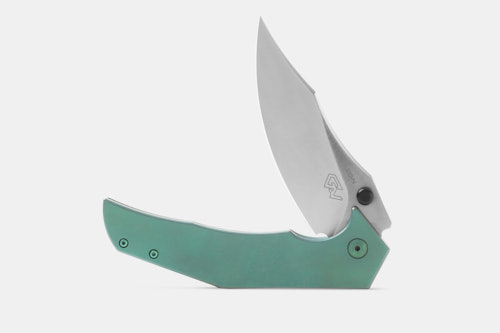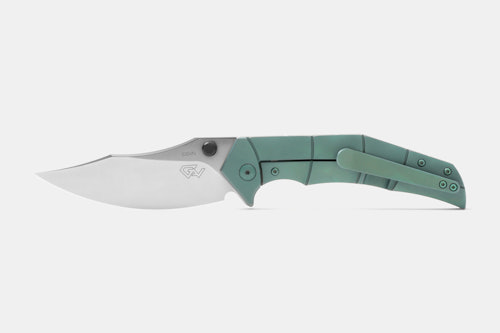Click to view our Accessibility Statement or contact us with accessibility-related questions


 VIEW 1 MORE
VIEW 1 MORE
Massdrop x Gavko Thresher Titanium Frame Lock Knife
Massdrop x Gavko Thresher Titanium Frame Lock Knife
bookmark_border
Where's the price?
To negotiate the best possible price for our customers, we agree to hide prices prior to logging in.
2K requests
·
Free Returns in USA
Product Description
Like other Gavko knives, the story of the Thresher begins with a shark. Ever since one of his first designs was said to look like a Mako shark, Gavko Knives designer Michal Gavac never looked back Read More
Want to know something about this product or how to use it?
Ask the community!
Ask the community!
Sort by: Newest
keyboard_arrow_down
Axeguy
1372
Mar 24, 2020
Simplest would be ceramic rods, like Spyderco Sharpmaker. Easy to use and cost is reasonable. Because the diameter of the rod is small, as is the 'contact patch' on the blade edge, it can handle tricky stuff like recurves with ease.
My approach with this particular knife (of which I have 2) is to use steel plates with diamond grits down to between 2,000 and 8,000 grit (depending on blade alloy and purpose).
ALWAYS use leather strops with or without compounds for finishing and for maintenance between uses.

Autoloader
10
Dec 16, 2019
workshop sharpener with grinding attachment, 17" belts, adjusted for the grind bevel. you can throw away a lot more money on lesser sharpening systems.

Cdoyle
400
Dec 13, 2019
Rmk7 I do the same as well. I have a sharpmaker for maintenance and a leather strop. If I need to re-profile or fix heavy damage such as chips I have a Lansky guided system with diamond and ceramic hones. Before I had those systems I just had a basic Lansky turn box with ceramic rods which got the job done also. A lot of people just use a spyderco sharpmaker only. They all work great.

upsilon
10
Dec 18, 2019
The common has slab sides and the big eye has scallops machined around the handle edges. If you look at the pictures, frame 03/26 shows the show-side of the three variants with the common at the top and the big eye in the middle and the pelagic on the bottom. Frame 04/26 shows the lock-sides of the three variants plus a left hand version. In this frame, the common is at the top, the pelagic comes next, then the big eye, and finally a left hand common on the bottom.
kaptainkuftic
0
Jul 1, 2021
bit of a shot in the dark, but does anyone know the size of the torx screws in the clip? Mine like to back off after a few months




